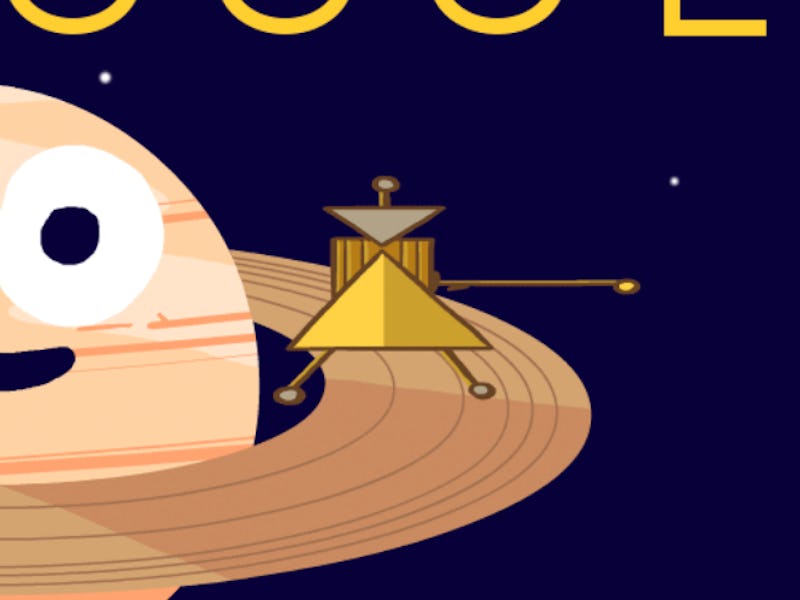Google released a new homepage doodle on Wednesday to commemorate the Cassini spacecraft starting its “grand finale” voyage moving between Saturn and its rings. The mission is Cassini’s last, and when it ends on September 15, it will mark the culmination of 20 years of work and research in outer space.
At 2 a.m. Pacific time on Wednesday, Cassini started its dive between the planet and its rings, losing radio contact with Earth momentarily. It’s expected to regain contact later in the day. During this “grand finale,” Cassini will orbit Saturn 22 times through the 1,500 mile-wide gap between the planet and its rings, using its 13-foot wide dish-shaped antenna as a protective shield to traverse a region no spacecraft has ever explored. In this mission, it will move increasingly closer to the planet before crashing into the atmosphere.
Google has a history of commemorating scientific achievements with its doodles, and although Google Chrome’s own omnibox search has rendered the main page sort of irrelevant in 2017, Google maintains a tradition of producing designs for events like the discovery of a dwarf star or the Juno probe orbiting Jupiter. Cassini is no exception.
Following a 2.2 billion-mile journey, the craft started orbiting Saturn 13 years ago. The project is a joint endeavor between NASA, the Italian Space Agency (known as the ASI), and the ESA.
But the craft is now low on fuel, and in 2010 NASA came up with a final mission that would preserve the nearby moons for future studies.
Scientists are hopeful that the mission will reveal more about the planet’s internal structure and the origin of its rings. Cassini will produce detailed maps of the planet’s gravity and magnetic fields, take close-up photos of its rings, and sample the icy ring particles being drawn into the planet’s magnetic field. The last images will make their way back to Earth a few hours before plunging down, but the team is also hopeful that Cassini will relay atmospheric data on its way down.
During its time in space, Cassini has shed light on the solar system’s second largest planet and its 62 moons. In 2015, the craft relayed images of Prometheus, showing its cratered surface. Last month, it shared images of Pan, which looks a bit like a piece of space ravioli.
“Cassini will make some of its most extraordinary observations at the end of its long life,” Linda Spilker, Cassini project scientist at NASA’s Jet Propulsion Laboratory, said in a statement.
Google also shared an alternative concept for the doodle:
Say cheese!
“Cassini’s grand finale is so much more than a final plunge,” said Spilker. “It’s a thrilling final chapter for our intrepid spacecraft, and so scientifically rich that it was the clear and obvious choice for how to end the mission.”
